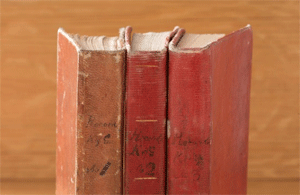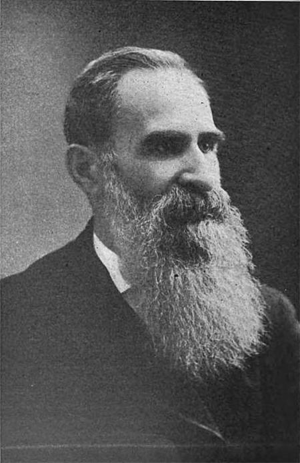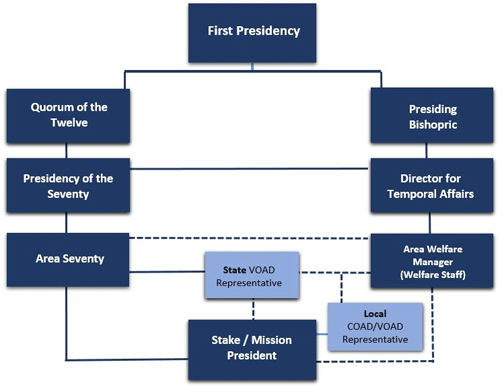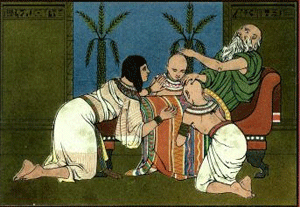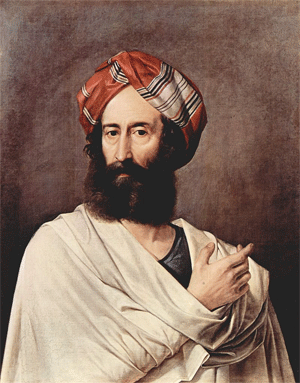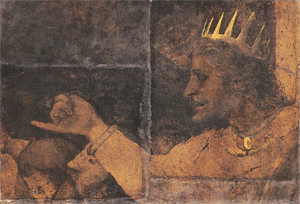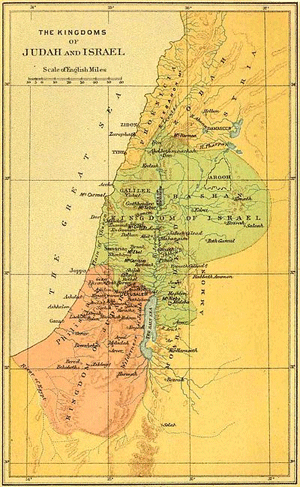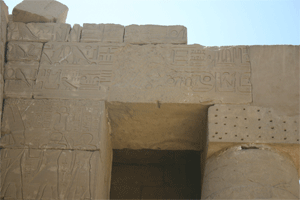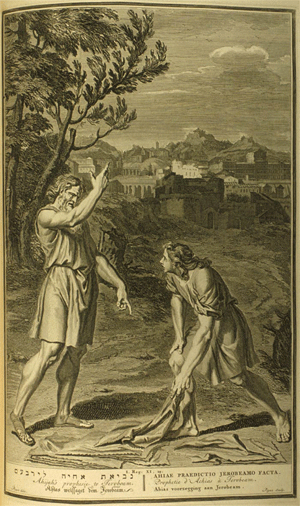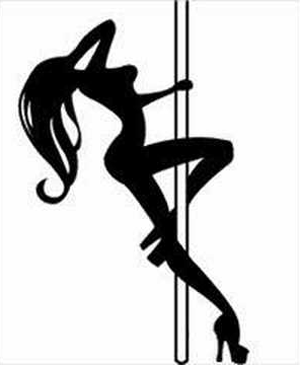by MormonThink
Accessed: 7/17/18
NOTICE: THIS WORK MAY BE PROTECTED BY COPYRIGHT
YOU ARE REQUIRED TO READ THE COPYRIGHT NOTICE AT THIS LINK BEFORE YOU READ THE FOLLOWING WORK, THAT IS AVAILABLE SOLELY FOR PRIVATE STUDY, SCHOLARSHIP OR RESEARCH PURSUANT TO 17 U.S.C. SECTION 107 AND 108. IN THE EVENT THAT THE LIBRARY DETERMINES THAT UNLAWFUL COPYING OF THIS WORK HAS OCCURRED, THE LIBRARY HAS THE RIGHT TO BLOCK THE I.P. ADDRESS AT WHICH THE UNLAWFUL COPYING APPEARED TO HAVE OCCURRED. THANK YOU FOR RESPECTING THE RIGHTS OF COPYRIGHT OWNERS.
On April 7th, 1842, Joseph Smith received a revelation instructing the establishment of a new organization parallel to the church. Since its inception, this organization has been referred to as the Council of Fifty, though the true name is quite different. It is an organization that has captured the fancy of many, both sympathetic and critical of Mormonism, yet it remains somewhat enigmatic for want of public documentation (1). In short, Joseph Smith ordained the council to be the governing body of the world, with himself as its King.
The name as revealed:
Verily thus saith the Lord, This is the name by which you shall be called, The Kingdom of God and His Law, with the Keys and power thereof, and judgment in the hands of his servants, Ahman Christ. (2)
The concept of a Kingdom of God, separate from the Church, remains somewhat familiar in Mormon discourse (3), but the idea that Daniel's rock hewn from the mountain never to be stopped is not the Church but a parallel organization is quite foreign. Moreover the original concepts have been modified to fit more keenly into a correlated perspective (4). Brigham Young, however, described the ultimate destiny of this kingdom. After rebuking the Saints by the Platte River for excessive frivolity, Brigham gathered the leadership around him and described their mountain destination. Wilford Woodruff recorded:
He then spoke of the standard & ensign that would be reared in Zion, to govern the Kingdom of God * And the nations of the earth. For every nation would bow the knee & every tongue confess that JESUS was the Christ. And this will be the standard: The Kingdom of God & his Laws & Judgment in {the [-] if [--] man Christ}. And on the standard would be a flag of every nation under heaven so there would be an invitation to all Nations under heaven to come unto Zion. (5)
Despite receiving the revelation in April 1842, Joseph waited until April 1844 to establish the kingdom. This wait was during Bennett's crusade against the church and while Hyrum and Emma had yet to be fully converted to all of Joseph's teachings. Once they were converted and the Fullness of the Priesthood was restored (with the associated capacity of King and Queen) the council was soon organized and Joseph publicly announced some of his views on World government (6).
Joseph established the Kingdom in secret and the business of the members was to remain so. Joseph purportedly initiated members into the council by covenant, password and penalty (7). Members included a wide demographic of Mormon hierarchy and non-Mormons. All members were chosen by the Prophet, which action required unanimous consent of the council. Though relatively few non-Mormons were included in the Council, the Lord revealed that non-Mormons would persist into the Millennium, and any just government would require their representation (8). Council members were organized into a hierarchy by age and Joseph was chairman and anointed Prophet, Priest and King over the Council and the world.
It is in this context that Joseph preached just days after receiving the revelation on the organization of the Council:
Although David was a King he never did obtain the spirit & power of Elijah & the fulness of the Priesthood, & the priesthood that he received & the throne & kingdom of David is to be taken from him & given to another by the name of David in the last days, raised up out of his linage (9)
Joseph taught that his first-born son in the covenant, David Hyrum – born after Joseph's death, would be this latter-day King over Israel (10), which teaching was widely recognized by 19th century church leaders (11).
Once the Council was organized, it adopted parliamentary “Rules of the Kingdom,” including those governing legislation:
To pass, a motion must be unanimous in the affirmative. Voting is done after the ancient order: each person voting in turn from the oldest to the youngest member of the Council, commencing with the standing chairman. If any member has any objections he is under covenant to fully and freely make them known to the Council. But if he cannot be convinced of the rightness of the course pursued by the Council he must either yield or withdraw membership in the Council. Thus a man will lose his place in the Council if he refuses to act in accordance with righteous principles in the deliberations of the Council. After action is taken and a motion accepted, no fault will be found or change sought for in regard to the motion. (12)
While affirmation or sustaining is required of members, it is interesting that all members were under covenant to voice dissent. There is tension in this legislative process as in the instance that no resolution could be passed, the chairman would attain the will of the Lord by revelation. It seems, however, that the Lord gave the people an ultimate veto. The council could not meet unless fifty percent of the members were in attendance. If a majority of council members did not favor pending legislation they could simply not allow any meetings to be held.
In reality, however, the Council never realized the measure of its prophetic capacity. In Joseph's day, it did send out ambassadors to foreign governments and lobbied the American government. It caused quite a stir when it usurped the Nauvoo High Council's authority and excommunicated William Law. It explored expeditions to Texas, Oregon and California for the emigration of the Saints and it was the foundation for Joseph's campaign for U.S. President.
While the Council was quite active during the duration of Joseph's life, his death was the beginning of its end. This secret Council of Fifty and Joseph's political kingship was one of the primary accusations of the Expositor. The Council did play a significant role in the succession crisis, but Brigham's later use of the council was quite perfunctory. And while there was a significant amount of Council activity from 1848 to 1850 while the civil government of the Utah Territory was established, the Council subsequently fell into disuse.
John Taylor aspired to re-kindle the council and is the last publicly recorded individual to be anointed Prophet, Priest and King, however all real power remained with the First Presidency and the Council continued to be a largely a figurative body until the death of its last member in 1945 (13).
As he left for Carthage, Joseph instructed his secretary to burn all the minutes of the council. Fortunately, William Clayton spared them by burial and they continue to reside, unmolested by foe and scholar in the vault of the First Presidency. Perhaps one day, these minutes, hundreds of pages, will inform our allegiance and educate those who seek to build up the Kingdom in the latter-days.
___________________
Notes:
1. While the official records of the Kingdom remain vaulted, many extant journals and secondary sources describe the workings of the Council of Fifty. The best information to date is catalogued in the works of Andrew F. Ehat and D. Michael Quinn:
o Quinn, D. M. (1980) The Council of Fifty and Its Members, 1844 to 1945. BYU Studies vol. 20 no. 2 pg. 163.
o Ehat, A. F. (1980) “It Seems Like Heaven Began on Earth”: Joseph Smith and the Constitution of the Kingdom of God. BYU Studies vol. 20 no. 3 pg. 253
o Ehat, A. F. (1982) Joseph Smith's Introduction of Temple Ordinances and the 1844 Succession Question. Master's thesis, Brigham Young University.
o Quinn, D. M. (1994) The Mormon Hierarchy: Origins of Power. Signature Books in association with Smith Research Associates. Salt Lake City.
2. See Ehat's “It Seems Like Heavan on Earth,” pg. 254.
3. See commentary on Isaiah 2:3, “Out of zion shall go forth the law . . . the word of the Lord from Jerusalem.” E.g., Smith, J. F., Doctrines of Salvation. vol. 3 pg. 69-71.
4. E.g., Bruce R. McConkie states in Mormon Doctrine. (1966, pg. 499) that:
The Church of Jesus Christ of Latter-day Saints is the kingdom of God on earth; it is the kingdom which shall never be destroyed or left to other people; it is the kingdom which shall break in pieces and consume all other kingdoms; and it shall stand forever. But for the present it functions as an ecclesiastical kingdom only.
With the millennial advent, the kingdom of God on earth will step forth and exercise political jurisdiction over all the earth as well as ecclesiastical jurisdiction over its own citizens.
5. 29 May, 1847. Wilford Woodruff's Journal, Kenny, S. eds. vol. 3, p. 188. Spelling corrected.
6. Joseph Smith wrote the following in the Times and Seasons, vol. 5 no. 8. ( April 15, 1844) pg. 510:
As the “world is governed too much” and as there is not a nation or dynasty, now occupying the earth, which acknowledges Almighty God as their law giver, and as ‘crowns won by blood, by blood must be maintained,' I go emphatically, virtuously, and humanely, for a THEODEMOCRACY, where God and the people hold the power to conduct the affairs of men in righteousness. And where liberty, free trade, and sailor's rights, and the protection of life and property shall be maintained inviolate, for the benefit of ALL. To exalt mankind is nobly acting the part of a God; to degrade them, is meanly doing the drudgery of the devil. Unitas, libertas, caritas esto perpetua!
With the highest sentiments of regard for all men, I am an advocate of unadulterated freedom.
7. Quinn, D. M. The Mormon Hierarchy. pg. 128-129.
8. John Taylor received a revelation that stated that the Lord instructed Joseph to include nonmembers that they “be admitted to the right of representation. . . and have full and free opportunity of presenting their views, interests and principles, and enjoying all the freedom and rights of the Council.” Revelation dated 27 June 1882 in notebook collection of John Taylor revelations, Church Archives. Cited in Ehat's “It Seems Like Heaven on Earth,” pg. 257. Entire revelation also available on the New Mormon Studies CD-ROM
9. The Words of Joseph Smith. pg. 331
10. Brigham related in a 7 Oct. 1863 sermon that Joseph said: “I shall have a son born to me, and his name shall be David; and on him, in some future time, will rest the responsibility that now rests upon me.” LDS Archives, as cited in Quinn, D. M. (1975) The Mormon Succession Crisis of 1844. BYU Studies vol. 16 no. 1 pg. 229. For Biblical reference to this latter-day David see 2 Samuel 7:8-29, 37:21-28; Zechariah 3; Isaiah 55:3-5; Jeremiah 30:4-9; Psalms 89:1-4; and D&C 113:5-6 (scriptural references taken from footnote 29 of the preceding WoJS citation).
11. Esplin, R. K. (1981) Joseph, Brigham and the Twelve: a Succession of Continuity. BYU Studies vol. 21 no. 3 pg. 336-338; see also Origins of Power pg. 231-232.
12. Ehat, A. F. “It Seems Like Heaven on Earth,” pg. 260
13. President Heber J. Grant was the last living member of the Council, of which there is public documentation.
Reference:
Theodemocracy
Wikipedia
Council of Fifty Quotes - very interesting Mormon quotes on the Council of Fifty
Book: Quest for empire;: The political kingdom of God and the Council of Fifty in Mormon history

